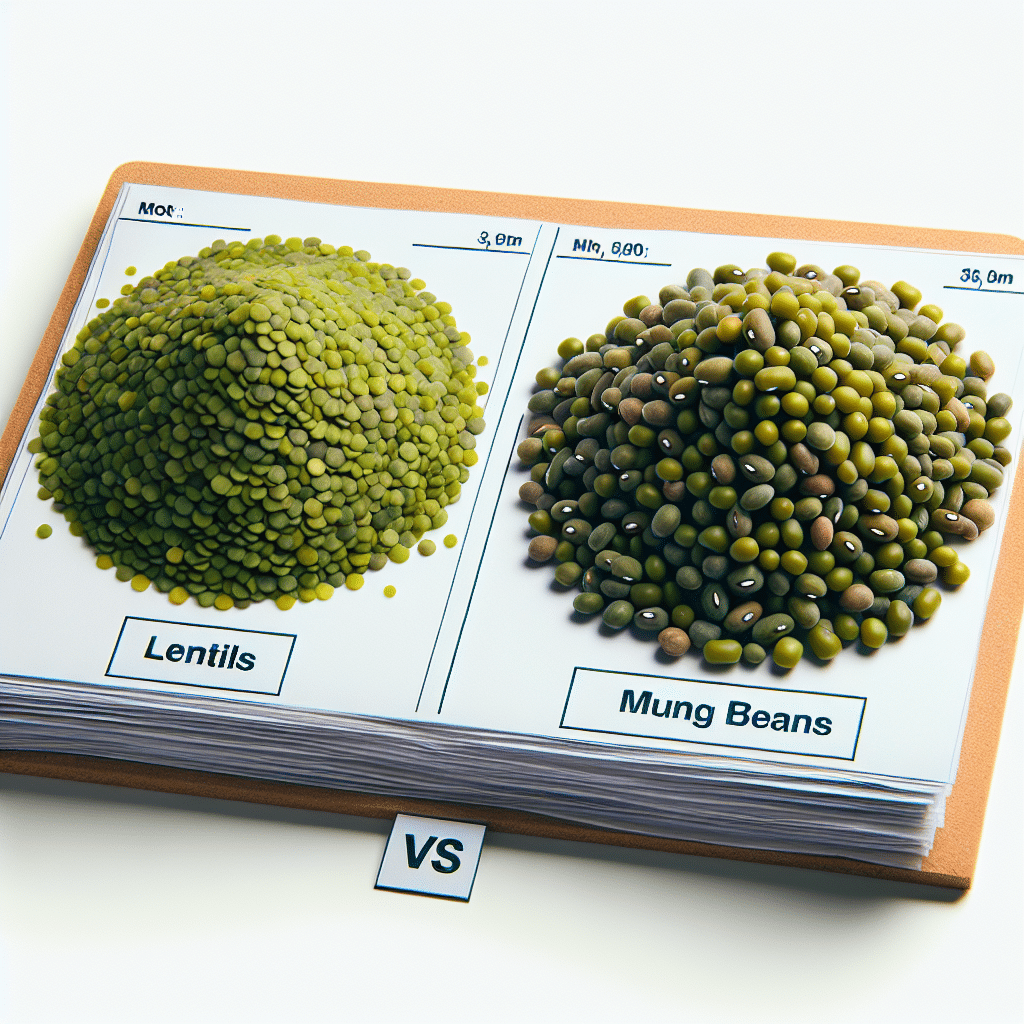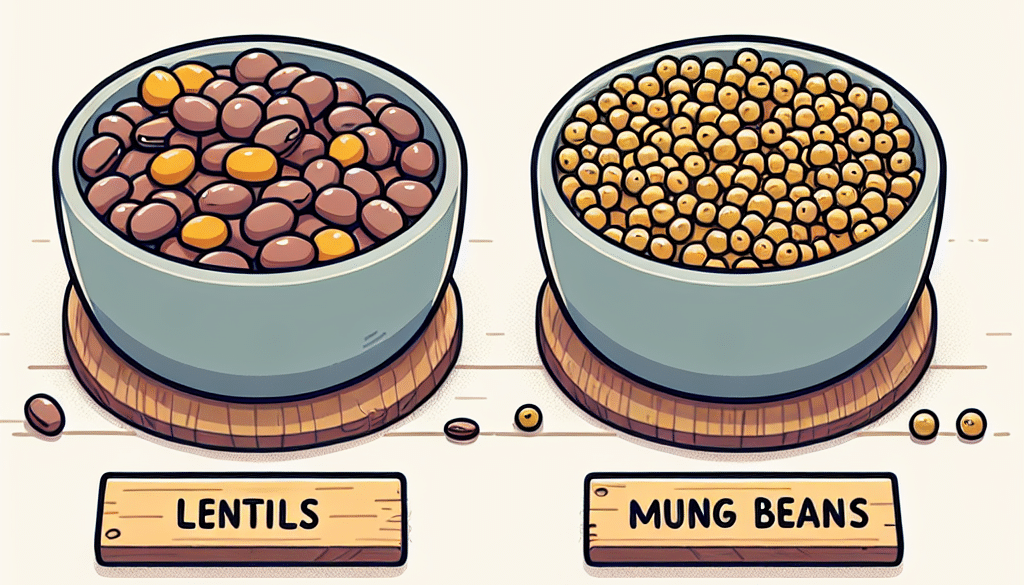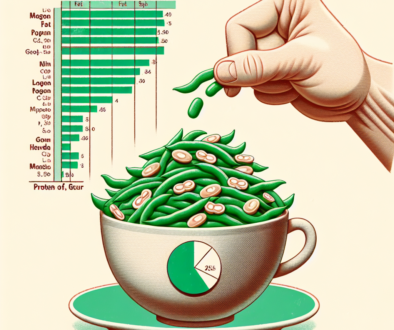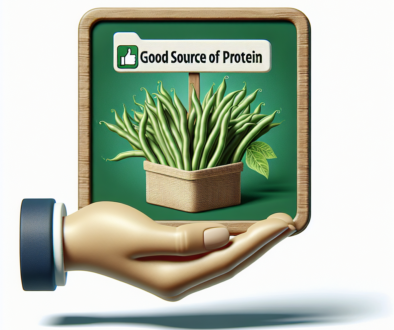Are Lentils And Mung Beans The Same Thing?
-
Table of Contents
- Lentils vs. Mung Beans: Understanding the Differences
- What Are Lentils?
- Nutritional Profile of Lentils
- Culinary Uses of Lentils
- What Are Mung Beans?
- Nutritional Profile of Mung Beans
- Culinary Uses of Mung Beans
- Comparing Lentils and Mung Beans
- Appearance and Texture
- Cooking Time
- Flavor Profile
- Nutritional Differences
- Health Benefits of Lentils and Mung Beans
- Conclusion: Embracing the Diversity of Legumes
- Discover ETprotein’s Plant-Based Protein Products
Lentils vs. Mung Beans: Understanding the Differences

When it comes to plant-based nutrition, lentils and mung beans are often mentioned in the same breath. They are both legumes, packed with protein, fiber, and essential nutrients, making them staples in vegetarian and vegan diets. However, despite their similarities, lentils and mung beans are not the same thing. This article will delve into the distinctions between these two nutritious legumes, exploring their characteristics, culinary uses, and health benefits.
What Are Lentils?
Lentils are small, lens-shaped legumes that come in a variety of colors, including green, brown, red, and black. They are a part of the legume family, known scientifically as Lens culinaris. Lentils have been a part of human diets for thousands of years and are particularly prevalent in South Asian, Middle Eastern, and Mediterranean cuisines.
Nutritional Profile of Lentils
- High in protein
- Rich in dietary fiber
- Good source of iron, folate, and manganese
- Contain polyphenols, which may have antioxidant properties
Culinary Uses of Lentils
Lentils are versatile and can be used in a variety of dishes. They are commonly used in soups, stews, salads, and as a meat substitute in vegetarian and vegan recipes. Lentils have a hearty, earthy flavor and tend to retain their shape when cooked, although some varieties, like red lentils, break down and become creamy, making them ideal for thickening dishes.
What Are Mung Beans?
Mung beans, known scientifically as Vigna radiata, are small, green legumes that are part of the same family as lentils. They are widely used in Asian cuisines, both in savory and sweet dishes. Mung beans are often sprouted to produce bean sprouts, which are a common ingredient in stir-fries and salads.
Nutritional Profile of Mung Beans
- Excellent source of protein
- High in fiber
- Rich in vitamins and minerals such as potassium, magnesium, and vitamin B6
- Contain antioxidants like flavonoids and phenolic acids
Culinary Uses of Mung Beans
Mung beans have a mild, slightly sweet flavor and are often used in dishes like curries, soups, and desserts. They can be cooked whole, split with skins on, or split and hulled. When hulled and split, they are known as moong dal. Mung beans cook relatively quickly and become soft and creamy when prepared.
Comparing Lentils and Mung Beans
While lentils and mung beans share some similarities, they have distinct differences that set them apart. Here are some key points of comparison:
Appearance and Texture
Lentils are typically smaller and have a more lens-like shape compared to mung beans, which are rounder. The texture of cooked lentils is generally firmer, while mung beans tend to be softer and more delicate.
Cooking Time
Lentils generally take longer to cook than mung beans. For example, brown lentils can take about 20-30 minutes to cook, while mung beans can be ready in as little as 15-20 minutes.
Flavor Profile
The flavor of lentils is earthy and robust, which makes them suitable for hearty dishes. Mung beans, on the other hand, have a milder, sweeter taste that works well in both savory and sweet preparations.
Nutritional Differences
Both lentils and mung beans are excellent sources of protein and fiber, but they have different vitamin and mineral profiles. For instance, lentils are a better source of iron and folate, while mung beans provide more potassium and vitamin B6.
Health Benefits of Lentils and Mung Beans
Both lentils and mung beans offer a range of health benefits due to their nutrient-dense profiles. Here are some of the advantages of incorporating these legumes into your diet:
- Improved digestion due to their high fiber content
- Support for heart health through their cholesterol-lowering effects
- Stabilized blood sugar levels thanks to their low glycemic index
- Weight management assistance because of their satiating properties
- Reduced risk of chronic diseases due to their antioxidant content
Conclusion: Embracing the Diversity of Legumes
In conclusion, while lentils and mung beans may seem similar at first glance, they are distinct legumes with unique characteristics, flavors, and nutritional profiles. Both are incredibly versatile and can be included in a wide range of dishes, contributing to a balanced and nutritious diet. Whether you prefer the hearty texture of lentils or the delicate sweetness of mung beans, there’s no denying the health benefits and culinary potential of these plant-based powerhouses.
Discover ETprotein’s Plant-Based Protein Products
If you’re looking to enhance your diet with high-quality plant-based proteins, consider ETprotein’s range of products. They offer mung bean protein and other organic bulk vegan proteins that are non-GMO, allergen-free, and characterized by a neutral taste. ETprotein caters to various industries, providing comprehensive solutions for all your protein needs.
About ETprotein:
ETprotein, a reputable protein and L-(+)-Ergothioneine (EGT) Chinese factory manufacturer and supplier, is renowned for producing, stocking, exporting, and delivering the highest quality organic bulk vegan proteins and L-(+)-Ergothioneine. They include Organic rice protein, clear rice protein, pea protein, clear pea protein, watermelon seed protein, pumpkin seed protein, sunflower seed protein, mung bean protein, peanut protein, and L-(+)-Ergothioneine EGT Pharmaceutical grade, L-(+)-Ergothioneine EGT food grade, L-(+)-Ergothioneine EGT cosmetic grade, L-(+)-Ergothioneine EGT reference grade and L-(+)-Ergothioneine EGT standard. Their offerings, characterized by a neutral taste, non-GMO, allergen-free attributes, with L-(+)-Ergothioneine purity over 98%, 99%, cater to a diverse range of industries. They serve nutraceutical, pharmaceutical, cosmeceutical, veterinary, as well as food and beverage finished product distributors, traders, and manufacturers across Europe, USA, Canada, Australia, Thailand, Japan, Korea, Brazil, and Chile, among others.
ETprotein specialization includes exporting and delivering tailor-made protein powder and finished nutritional supplements. Their extensive product range covers sectors like Food and Beverage, Sports Nutrition, Weight Management, Dietary Supplements, Health and Wellness Products, and Infant Formula, ensuring comprehensive solutions to meet all your protein needs.
As a trusted company by leading global food and beverage brands and Fortune 500 companies, ETprotein reinforces China’s reputation in the global arena. For more information or to sample their products, please contact them and email sales(at)ETprotein.com today.












